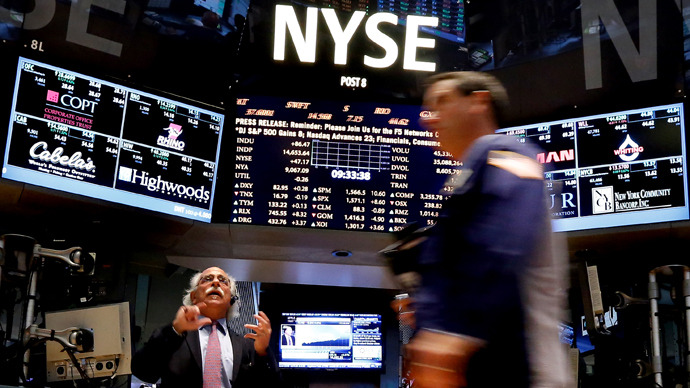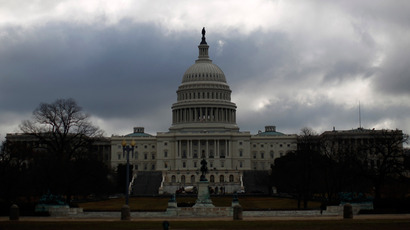The Tweet that rocked Wall Street: $200 billion lost on fake message

A single hoax message sent via Twitter, the social media platform, erased billions of value from US stock markets on Tuesday, drawing attention to an electronic Trojan horse that hackers may manipulate with apparent ease.
A picture may contain a thousand words, but a single fake tweet can blow a hole in financial markets in seconds.
That was the costly lesson learned on Tuesday as a tweet allegedly from the Associated Press went the global rounds just before 1:08 p.m., reporting two explosions in the White House and that President Barack Obama had been injured.
Within minutes AP personnel swung into damage control, attempted to reassure the tweet was a hoax. But the damage was already done: The bogus message sent the Dow Jones Industrial Average into a tailspin, shaving 150 points, or about 1 percent, in the blink of an eye.
The fake Tweet dealt a hammer blow to other markets as well: The S&P 500, the NASDAQ and crude oil all dropped 1 percent. The S&P 500's losses alone wiped out about $136.5 billion, according to Reuters; the broader market lost nearly $200 billion in value, USA Today reported. At the same time, the yield on the 10-year US Treasury note fell 4 basis points, and the CBOE Volatility Index – the so-called ‘fear index’ – surged 10 percent.
The fallout from the fake tweet, which came as the nation remains on edge following the attacks at the Boston Marathon, was compounded by new technology that can ‘read’ social media messages and place bets accordingly, experts say.

The two-minute period of panic selling forced the Dow down from around 14700 to 14554. By 1:13 p.m., a mere 5 minutes after the message was picked up by traders, the market had recovered most of the ground that had been lost.
Despite the brief pandemonium, the Dow at the closing bell was up 152.29 points, or 1.05%, at 14719.46.
The Securities and Exchange Commission (SEC), said it is investigating trade activity that occurred at the time of the tweet, recently gave companies permission to release vital information through social media such as Twitter and Facebook.
The computer programs that are able to decipher the messages "are incredibly sophisticated," Eric Pritchett, chief executive at Potamus Trading, a brokerage firm that specializes in electronic trading, told the Wall Street Journal. A program "reading the feed and seeing 'blowing up' can also read the one saying the account was 'hacked,'" Pritchett said.
SEC officials said it was too early to determine if the hoax was an effort on the part of some individuals to profit from the confusion, but some are pointing to such a possibility.
"Imagine a situation where knowing a tweet of this kind can cause a market to go down," Giovanni Vigna, co-founder and chief technology officer of the security firm Lastline, told WSJ. "You buy at a low price, and when the market rebounds, you make a profit."
Meanwhile, the seven minutes that elapsed before the market understood it was the victim of a hoax would have given any perpetrators plenty of time to pocket a huge profit.
“Mom-and-pop traders could hardly move in time to profit off the dip, but seven minutes is an eternity in the world of high-frequency trading, where equities are exchanged in fractions of a second,” the business news outlet Quartz reported. “Trading bots could certainly have bought index funds at the bottom of the plunge, quickly profiting as the rest of the market realized that the AP tweet was wrong.”
Tuesday’s incident represents a weak link in the way Wall Street does business, where getting information fast sometimes means the difference between millions – even billions – of dollars. Thus, too many investors seem ready to eschew calm fact-checking and place all their trust in largely unregulated social media as a form of news gathering.
“In many respects, Twitter is the latest news wire of Wall Street. Investors have come to rely on the social medium for minute-by-minute news and opinion,” Jack Ablin, chief investment officer at BMO Private Bank, said in emailed comments to MarketWatch. “We have to recognize Twitter for what it is, a social media site, and an unfiltered news source.”
A group calling itself the Syrian Electronic Army on Tuesday claimed responsibility on its own Twitter feed for the AP hack.
The FBI is investigating the incident, said Jenny Shearer, an FBI spokeswoman in Washington. She declined to elaborate on the details.














